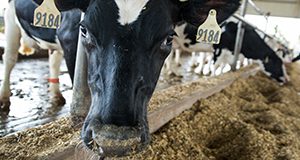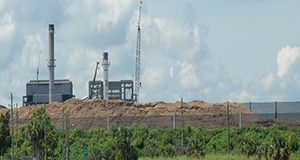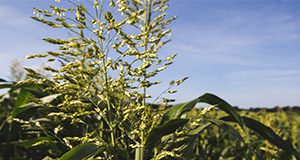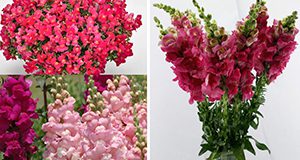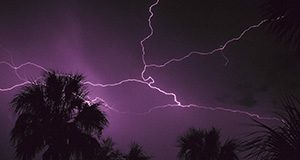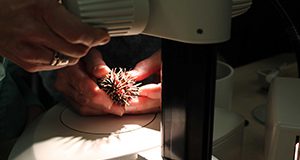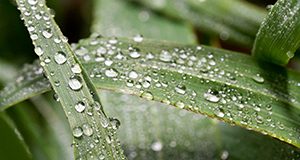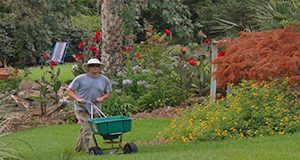This 6-page document reviews advantages, disadvantages, and cost of four dry-off methods and gives recommendations for practical dry-off management. Written by Pornpamol Pattamanont, Marcos Marcondes, and Albert De Vries, and published by the UF/IFAS Department of Animal Sciences, June 2020.
https://edis.ifas.ufl.edu/an360
Author: Amanda Quintos
Bagasse: A Potential Organic Soil Amendment Used in Sugarcane Production
Bagasse is an agricultural by-product derived from the sugarcane milling process. It is a dry and fibrous residue left after the extraction of sugar juice from sugarcane. This 5-page document is a preliminary investigation into the possible effects of using bagasse as a soil amendment. Written by Jehangir H. Bhadha, Nan Xu, Raju Khatiwada, Stewart Swanson, and Chris LaBorde, and published by the UF/IFAS Department of Soil and Water Sciences, August 2020.
https://edis.ifas.ufl.edu/ss690
Weed Management in Peanuts
Successful weed control in peanuts involves use of good management practices in all phases of peanut production. This 11-page document lists herbicide products registered for use in Florida peanut production, their mode of actions group, application rate per acre and per season, and reentry interval. It also discusses the performance of these herbicides on several weeds under Florida conditions. Written by J. A. Ferrell, G. E. MacDonald, and P. Devkota, and published by the UF/IFAS Agronomy Department, revised May 2020.
https://edis.ifas.ufl.edu/wg008
Adjusting Crop Yield to a Standard Moisture Content
Since there are different ways to report moisture (as a decimal or as a percentage), and because the calculation seems intuitive, there is some confusion among agricultural professionals about how to adjust yield to a standardized moisture content. This 4-page publication aims to clarify the concept and the math. Written by Michael J. Mulvaney and Pratap Devkota, and published by the UF/IFAS Agronomy Department, May 2020.
https://edis.ifas.ufl.edu/ag442
Mite Pests of Southern Highbush Blueberry in Florida
This 4-page document discusses life cycles, damage, monitoring, and management of southern red mites and false spider mites in southern highbush blueberries. Written by Oscar E. Liburd, Lorena Lopez, and Doug Phillips, and published by the UF/IFAS Entomology and Nematology Department, June 2020.
https://edis.ifas.ufl.edu/in1284
Development of a Model Mutagenesis System for Snapdragon
This 4-page document describes the advantages of snapdragon’s elegant transposon mutagenesis system and its connection to plant breeding. Written by Zhaoyuan Lian, Heqiang Huo, Sandra Wilson, and Jianjun Chen, and published by the UF/IFAS Environmental Horticulture Department, August 2020.
https://edis.ifas.ufl.edu/ep584
Strategies to Increase Personal Resilience in Disaster Response Efforts
This 3-page publication highlights strategies to help Extension professionals increase their personal resilience in disaster response efforts. Written by Amanda D. Ali, Angela Lindsey, Amy Harder, Lisa Lundy, and T. Grady Roberts, and published by the UF/IFAS Department of Agricultural Education and Communication, May 2020.
https://edis.ifas.ufl.edu/wc360
Bermudagrass Production in Florida
This 10-page document is primarily for Extension agents and farmers looking for detailed information about bermudagrass production in Florida, including cultivar characteristics, fertilization, and pest and disease management. Written by M. O. Wallau, J. M. B. Vendramini, and J. K. Yarborough, and published by the UF/IFAS Agronomy Department, revised May 2020.
https://edis.ifas.ufl.edu/aa200
Diagnostic Methods for the Comprehensive Health Assessment of the Long-Spined Sea Urchin, Diadema antillarum
This 55-page document contains a wealth of information on the long-spined sea urchin, which is an important animal in coral reef ecosystems. The publication discusses diagnostic methods for Diadema antillarum and provides reporting forms for laboratory and diagnostic work. Written by Ruth Francis-Floyd, Jan Landsberg, Roy Yanong, Yasu Kiryu, Shirley Baker, Deborah Pouder, William Sharp, Gabriel Delgado, Nicole Stacy, Tom Waltzek, Heather Walden, Roxanna Smolowitz, and Greg Beck, and published by the UF/IFAS Veterinary Medicine—Large Animal Clinical Sciences Department, May 2020.
https://edis.ifas.ufl.edu/vm244
Amaranthus palmeri—Palmer Amaranth
Palmer amaranth has become one of the most troublesome weeds in the southeastern US due to its vigorous growth rate, high seed production, and development of resistance to herbicides from multiple modes of action. This 4-page publication illustrates characteristics of this weed to assist in accurate identification, proper management, and development of effective control strategies. Written by Sergio Morichetti, Jason Ferrell, and Pratap Devkota, and published by the UF/IFAS Agronomy Department, revised April 2020.
https://edis.ifas.ufl.edu/ag346
How to Avoid Common Problems with Leaf Wetness Sensor Installation and Maintenance
Leaf wetness duration is an essential input in disease prediction models and decision support systems in Florida and elsewhere. Incorrect installation or lack of regular maintenance of leaf wetness sensors may lead to errors in plant disease risk monitoring and negative impacts on yield. This 7-page publication provides detailed guidelines for the proper installation and maintenance of leaf wetness sensors and describes the most common problems found in field installations as well as potential solutions. Written by T. B. Onofre, C. W. Fraisse, N. A. Peres, and J. McNair, and published by the UF/IFAS Department of Agricultural and Biological Engineering, February 2020.
https://edis.ifas.ufl.edu/ae538
Basic Tips for Designing Efficient Irrigation Systems
As freshwater resources become increasingly scarce and droughts become more frequent, there is a need for efficient use of water resources. Designing efficient irrigation systems and equipment will not only save money but also conserve water. This 10-page fact sheet discusses factors to consider when designing irrigation systems. Written by Haimanote K. Bayabil, Kati W. Migliaccio, Michael Dukes, and Laura Vasquez, and published by the UF/IFAS Department of Agricultural and Biological Engineering, February 2020.
https://edis.ifas.ufl.edu/ae539
ET-Based Irrigation Scheduling for Papaya (Carica papaya) in Florida
Three irrigation scheduling methods (set schedule, ET-based, and tensiometer-based) were tested for papaya production in south Florida. ET-based irrigation scheduling was found to conserve water effectively. This 6-page document primarily focuses on the ET-based irrigation scheduling techniques for papaya under Florida conditions. Written by Haimanote K. Bayabil, Jonathan H. Crane, Kati W. Migliaccio, Yuncong Li, and Fredy Ballen, and published by the UF/IFAS Department of Agricultural and Biological Engineering, March 2020.
https://edis.ifas.ufl.edu/ae540
Pi bon fason pou granmoun (kap pran swen lot moun) lave men yo
Lave men enpòtan pou redwi transfè jèm mikwòb ki soti nan matyè fekal oswa poupou pou ale nan bouch, ki ka lakoz maladi. Timoun piti ak granmoun aje yo gen mwens kapasite pou yo konbat jèm mikwòb pase lòt kategori moun. Kòm moun kap pran swen moun ou ka ede diminye risk maladi ki ka pwopaje nan anviwònman ki gen anpil moun lè w swiv bon jan metòd pou lave men w. This is the Haitian Creole version of FCS8782, Proper Hand Washing for Caregivers. Written by Amy Simonne, translated and reviewed by Emmanuel Jean Claude Duvalsaint and Nicole Monval, and published by the UF/IFAS Department of Family, Youth and Community Sciences, March 2020.
https://edis.ifas.ufl.edu/fy1490
Pi bon fason pou timoun piti (ki gen laj pou ale lekol) lave men yo
Jèm yo ka kache anba zong ki long ak nan men ki sal. Kenbe zong ou kout epi lave men w souvan, se aksyon ki pi enpòtan ou ka poze pou anpeche jèm mikwòb fè w tonbe malad. Jèm ki bay maladi tankou larim, grip, dyare, ak vomisman ka vinn nan men w lè w manyen objè ki nan alantou w. Moun, animal domestik, manje kri, jwèt, tè, ak tout objè nou itilize plizyè fwa pa jou, yo tout ka gen jèm mikwòb sou yo. Lè w lave men w byen li ede retire jèm mikwòb nan men w. This is the Haitian Creole version of FCS8783, Proper Hand Washing for School Children. Written by Amy Simonne, translated and reviewed by Emmanuel Jean Claude Duvalsaint and Nicole Monval, and published by the UF/IFAS Department of Family, Youth and Community Sciences, March 2020.
https://edis.ifas.ufl.edu/fy1491
Adecuado lavado de manos para cuidadores
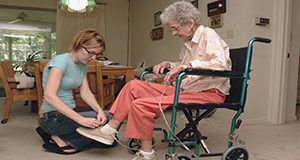 El lavado de las manos es una forma importante de reducir la transferencia fecal-oral de gérmenes que causan enfermedades. Los niños pequeños y los ancianos con limitaciones tienen menos capacidad para combatir los gérmenes que otras personas. Como cuidador, usted puede ayudar a reducir el riesgo de transmisión de enfermedades en ambientes con multitudes mediante el uso de los adecuados procedimientos de lavado de manos. This is the Spanish language version of Proper Hand Washing for Caregivers (FCS8782Eng/FY724).
El lavado de las manos es una forma importante de reducir la transferencia fecal-oral de gérmenes que causan enfermedades. Los niños pequeños y los ancianos con limitaciones tienen menos capacidad para combatir los gérmenes que otras personas. Como cuidador, usted puede ayudar a reducir el riesgo de transmisión de enfermedades en ambientes con multitudes mediante el uso de los adecuados procedimientos de lavado de manos. This is the Spanish language version of Proper Hand Washing for Caregivers (FCS8782Eng/FY724).
https://edis.ifas.ufl.edu/fy1486
Adecuado lavado de manos para ninos en la escuela
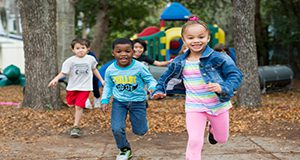 Los gérmenes pueden esconderse debajo de uñas largas y en manos sucias. Mantener las uñas cortas y lavarse las manos con frecuencia son las cosas más importantes que puedes hacer para evitar que los gérmenes te enfermen. Los gérmenes que causan enfermedades como resfriados, gripe, diarrea y vómitos pueden llegar a tus manos al tocar las cosas a tu alrededor. Las personas, las mascotas, los alimentos crudos, los juguetes, la tierra y los objetos utilizados en nuestra vida diaria pueden tener gérmenes. Lavarte las manos adecuadamente ayuda a eliminar los gérmenes. This is the Spanish language version of Proper Hand Washing for School Children (FCS8783Eng/FY725).
Los gérmenes pueden esconderse debajo de uñas largas y en manos sucias. Mantener las uñas cortas y lavarse las manos con frecuencia son las cosas más importantes que puedes hacer para evitar que los gérmenes te enfermen. Los gérmenes que causan enfermedades como resfriados, gripe, diarrea y vómitos pueden llegar a tus manos al tocar las cosas a tu alrededor. Las personas, las mascotas, los alimentos crudos, los juguetes, la tierra y los objetos utilizados en nuestra vida diaria pueden tener gérmenes. Lavarte las manos adecuadamente ayuda a eliminar los gérmenes. This is the Spanish language version of Proper Hand Washing for School Children (FCS8783Eng/FY725).
https://edis.ifas.ufl.edu/fy1487
Adecuado lavado de manos para manipuladores de alimentos
 El lavado de manos es uno de los principales métodos utilizados para ayudar a prevenir enfermedades transmitidas por los alimentos. El lavado adecuado de las manos reducirá el riesgo de transmitir microorganismos, como bacterias, virus y otros agentes, que causan enfermedades a las personas que comen los alimentos que manipulas. Si necesita usar desinfectante para las manos, ¡siempre lávate las manos primero! La suciedad, los alimentos o cualquier otra cosa en las manos hacen menos eficaz el efecto del alcohol. ¡No use desinfectante para manos en lugar de lavarse las manos! This is the Spanish language version of Proper Hand Washing for Food Handlers (FCS8784Eng/FY726).
El lavado de manos es uno de los principales métodos utilizados para ayudar a prevenir enfermedades transmitidas por los alimentos. El lavado adecuado de las manos reducirá el riesgo de transmitir microorganismos, como bacterias, virus y otros agentes, que causan enfermedades a las personas que comen los alimentos que manipulas. Si necesita usar desinfectante para las manos, ¡siempre lávate las manos primero! La suciedad, los alimentos o cualquier otra cosa en las manos hacen menos eficaz el efecto del alcohol. ¡No use desinfectante para manos en lugar de lavarse las manos! This is the Spanish language version of Proper Hand Washing for Food Handlers (FCS8784Eng/FY726).
https://edis.ifas.ufl.edu/fy1488
Adecuado lavado de manos para adultos mayores
 Lavarse las manos es una forma importante de reducir la propagación de enfermedades infecciosas. Los gérmenes de origen humano y animal pueden transmitirse a las manos, que a su vez pueden transmitir los gérmenes a otras personas, alimentos y cualquier otra cosa que toquen. El adecuado lavado de las manos puede reducir la cantidad de microorganismos infecciosos en nuestras manos y reducir el riesgo de contraer algunas enfermedades. This is the Spanish language version of Proper Hand Washing for Elders (FCS8785Eng/FY727).
Lavarse las manos es una forma importante de reducir la propagación de enfermedades infecciosas. Los gérmenes de origen humano y animal pueden transmitirse a las manos, que a su vez pueden transmitir los gérmenes a otras personas, alimentos y cualquier otra cosa que toquen. El adecuado lavado de las manos puede reducir la cantidad de microorganismos infecciosos en nuestras manos y reducir el riesgo de contraer algunas enfermedades. This is the Spanish language version of Proper Hand Washing for Elders (FCS8785Eng/FY727).
https://edis.ifas.ufl.edu/fy1489
Urban Fertilizer Ordinances in the Context of Environmental Horticulture and Water Quality Extension Programs: Frequently Asked Questions
Excess nitrogen (N) and phosphorus (P) in water bodies are a leading cause of water quality degradation statewide. More than 50 Florida counties and municipalities now have formal fertilizer ordinances, which in some cases include fertilizer blackouts, or bans on the usage of N and P fertilizers during certain times of the year. This 8-page document provides information on the underlying issues of fertilizer use, with an emphasis on an urban setting, and outlines the current state of the science on urban fertilizers and water quality in Florida. Written by Michael D. Dukes, Lisa Krimsky, Mary Lusk, Laurie Trenholm, Bryan Unruh, Michelle Atkinson, and Rao Mylavarapu, and published by the UF/IFAS Department of Agricultural and Biological Engineering, February 2020.
https://edis.ifas.ufl.edu/ae534
